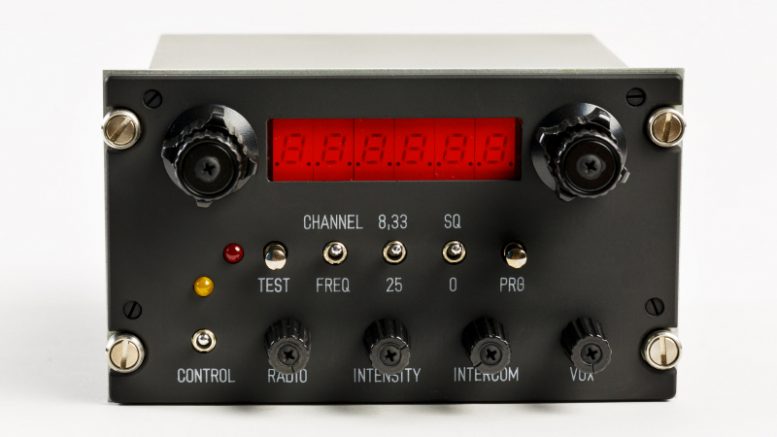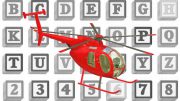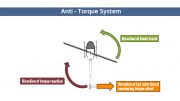Helicopter VHF Airband Radio Proceedures
AIRCRAFT COMMUNICATIONS RADIO USAGE PROCEEDURE TIPS
[easyazon_infoblock align=”right” cloak=”n” identifier=”B003EN1VDK” locale=”US” localize=”y” nf=”y” tag=”rafsb-20″]
Listen before you call – Someone else may be using the channel. If more than one aircraft communications station is transmitting at the same time, garbled transmission will result.
Speak clearly – Use your normal voice and do not speak too fast. Have the microphone close to your mouth but test so as to not cause distortion.
Think before you speak – Know what you are going to say before you press the microphone switch. Divide your message into natural phrases instead of individual words so that it flows smoothly.
Spelling – Spell difficult, ambiguous or unfamiliar words – using the phonetic alphabet if necessary.
Station to Station Transmissions – Communications between stations should be restricted to official messages or those of an emergency nature only.
[easyazon_infoblock align=”right” cloak=”n” identifier=”B00JFJU5Y8″ locale=”US” localize=”y” nf=”y” tag=”rafsb-20″]
Short Conversation – Do not waffle. Conversations should be kept as brief and accurate as possible allowing others time to use the frequency.
Prompt Replies – When called, or when an aircraft communications transmitting station has said "over", reply immediately. When a transmitting station fails to receive an immediate reply, there is doubt as to whether;
i. the message is received
ii. the radio is working
iii. the operator is still at the radio.
It is essential that everyone listening on radio frequencies is in no doubt as to who is talking to whom.
The call sign of the station contacted is always to be used BEFORE that of the transmitting station, even in an emergency it would start "all stations"…this is… declaring an emergency…..

Aviation Phrases
The following list and explanations explain most of the common phrases which may be used in message texts;
| Aircraft Communications Phrase | Aircraft Communications Explanation |
|---|---|
| "AFFIRMATIVE" | Means YES – more distinctly |
| "FIGURES" | The following part of the text in numerals. |
| "I SAY AGAIN" | A repeated word or phrase or a correction. |
| "I SPELL" | Means that the next word will be spelled out. In poor conditions, phonetics will be used. |
| "MESSAGE CORRECT" | The read-back was correct. |
| "NEGATIVE" | Means NO – more distinctly. |
| "NO DUFF" | May be used during an exercise to indicate that this is not an exercise message. A genuine message. |
| "RADIO CHECK" | Request a report on reception of the transmission at your location. |
| "READ BACK" | The message just sent will be re-transmitted for clarity. |
| "SAY AGAIN ALL AFTER" | A request for the sender to re-transmit all of the transmission after a particular word of phrase. |
| "STOP" | Indicates a FULL STOP punctuation mark in the message. |

Aircraft Communications General Procedures
[easyazon_infoblock align=”right” cloak=”n” identifier=”B00ALYVFOU” locale=”US” localize=”y” nf=”y” tag=”rafsb-20″]
"This is" should be used as to separate the call sign of the station being called from the call sign of the calling station.
"OVER" or "OUT". When a transmission has not ended with either "OVER" or "OUT", delays and misunderstandings can result. A receiving station would have no indication that the transmitting station has said all that it wants to say unless one of these words is used.
When "OUT" is not used to complete a series of transmissions, either stations on the frequency will have no clear indication that the frequency is free for other users.
"OVER" means "I have finished transmitting" – "please go ahead with your reply".
"OUT" means "This conversation is ended" – the frequency is now free for other users. These definitions indicate that the phrase "OVER AND OUT" is contradictory and should not be used.
Aircraft Communications Proceedure Words (Pro-words)
[easyazon_infoblock align=”right” cloak=”n” identifier=”B06XC3PWTP” locale=”US” localize=”y” nf=”y” tag=”rafsb-20″]
Pro-words are standard, easily pronounced words which have been assigned special meanings to speed up messages handling on radio networks.
This can be compared to shorthand, though with known and recognisable words.
Por-words are easily recognisable in their aviation communications arena by pilots and air traffic controllers.
They should be used whenever appropriate to put across your required aircraft communications information in the most efficient way.
A pro-word, or combination of pro-words must never be substituted for any word or phrase in the text of a message to avoid any confusion.
The following pro-words are acceptable for general use:
| Phrase | Explanation |
|---|---|
| "ACKNOWLEDGE" | Receipt of this message must be acknowledge by the addressee. (The person to whom it is addressed) |
| "ALL BEFORE/AFTER" | Used when asking to repeat that portion of a message preceding or following a key word of the text. |
| "CORRECTION" | Indicates that an error has been made and that the transmission will continue from the last word correctly used. |
| "DISREGARD THIS" | This transmission has been made in error –TRANSMISSION" disregard. |
| "FIGURES" | Numerals follow. |
| "FROM" | Originator of the message is …………………….. |
| "I SAY AGAIN" | I will re-transmit the message or part message. |
| "I SPELL" | The next word will be spelled. In poor conditions, use phonetics. |
| "RELAY TO" | Transmit this message to the addressee indicated. |
| "ROGER" | Message received and understood. |
| "ROGER SO FAR" | (query) Have you received my message so far? (answer) Message received so far – carry on. |
| "SAY AGAIN" | Re-transmit all (or all after) your transmission. |
| "WAIT" | I am pausing for a few seconds. |
| "WAIT OUT" | I will call you again – a pause for longer that a few seconds. |
| "WILCO" | I Will Comply with your message (to be used only by the person who intends to comply) |

[easyazon_infoblock align=”right” cloak=”n” identifier=”B00JFJSTJG” locale=”US” nf=”y” localize=”y” tag=”rafsb-20″]
A great way to learn the lingo of the skies is with a hand held Maycom AR-108 receiver tuned in to your local aviation band, local airport or flight club.
If you don’t have one of these in your area you can always set it to the many national and international aircraft frequencies for the commercial aeroplanes that are constantly flying all over the country as they are sure to pass within easy radio transmission range with their more powerful transmitters.
This is exactly how I started learning before my pilot training had even started. Radio scanners or even listening to an Airband VHF Radio (without transmitting) not only is educational to learning correct pilot radio procedures, but also fun and interesting.
I was fortunate enough to live close by to my flight training facility. Not only was it interesting but a great education in linguistics while trying to understand some of the garble!
[easyazon_infoblock align=”right” cloak=”n” identifier=”B00JFJUCH8″ locale=”US” nf=”y” localize=”y” tag=”rafsb-20″]
It did indeed help my learning curve once I took to the air with the sounds booming through my headset becoming second nature allowing me to concerntrate more on my actual flight training.
It also allowed me to hear what was going on behind the scenes at many of the fly-ins and airshows that I attended.
I really didn’t think this would be as enjoyable as it turned out to be, but it sure was. Learns your radio procedures!
[easyazon_infoblock align=”right” cloak=”n” identifier=”B0073F7ZMQ” locale=”US” nf=”y” localize=”y” tag=”rafsb-20″]
Compact, Easy-To-Use, Multi-band Handheld TSC100RA Air Band Scanner
Whether you’re an airshow enthusiast or a student pilot looking to improve your understanding of aviation communications, the TSC-100RA packs an enormous amount of functionality into a compact, handheld unit.
This super intuitive, rugged VHF airband unit features 200 memory channels, LCD backlighting, dual watch capability, scan & search features, automatic battery conservation, an external earphone jack, and unrivaled, clear & crisp audio quality.
This impressive TSC100RA Air Band Scanner can receive the aviation frequency band, low VHF band (66-88MHz), VHF band, and commercial AM & FM bands. The TSC100RA comes with AA batteries and includes an SMA-to-BNC antenna adapter. An excellent addition to any pilot’s flight bag.






Be the first to comment on "Helicopter Radio Proceedures – Aircraft Communications"